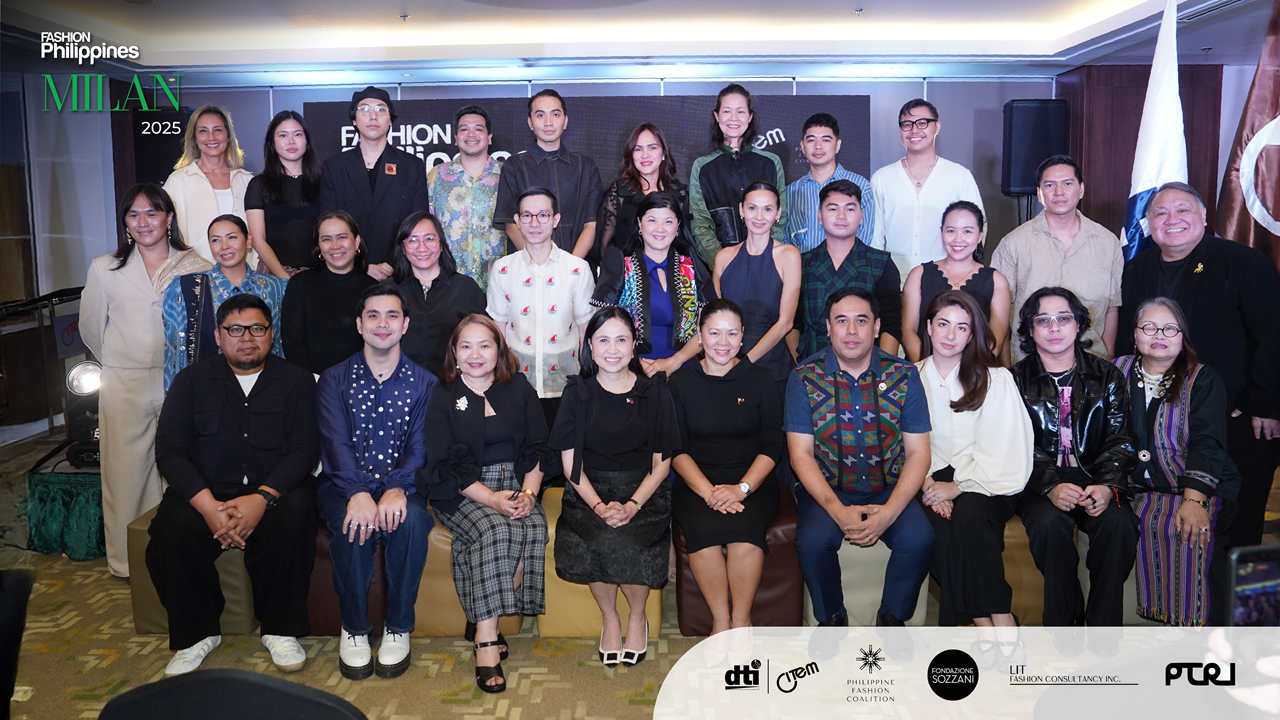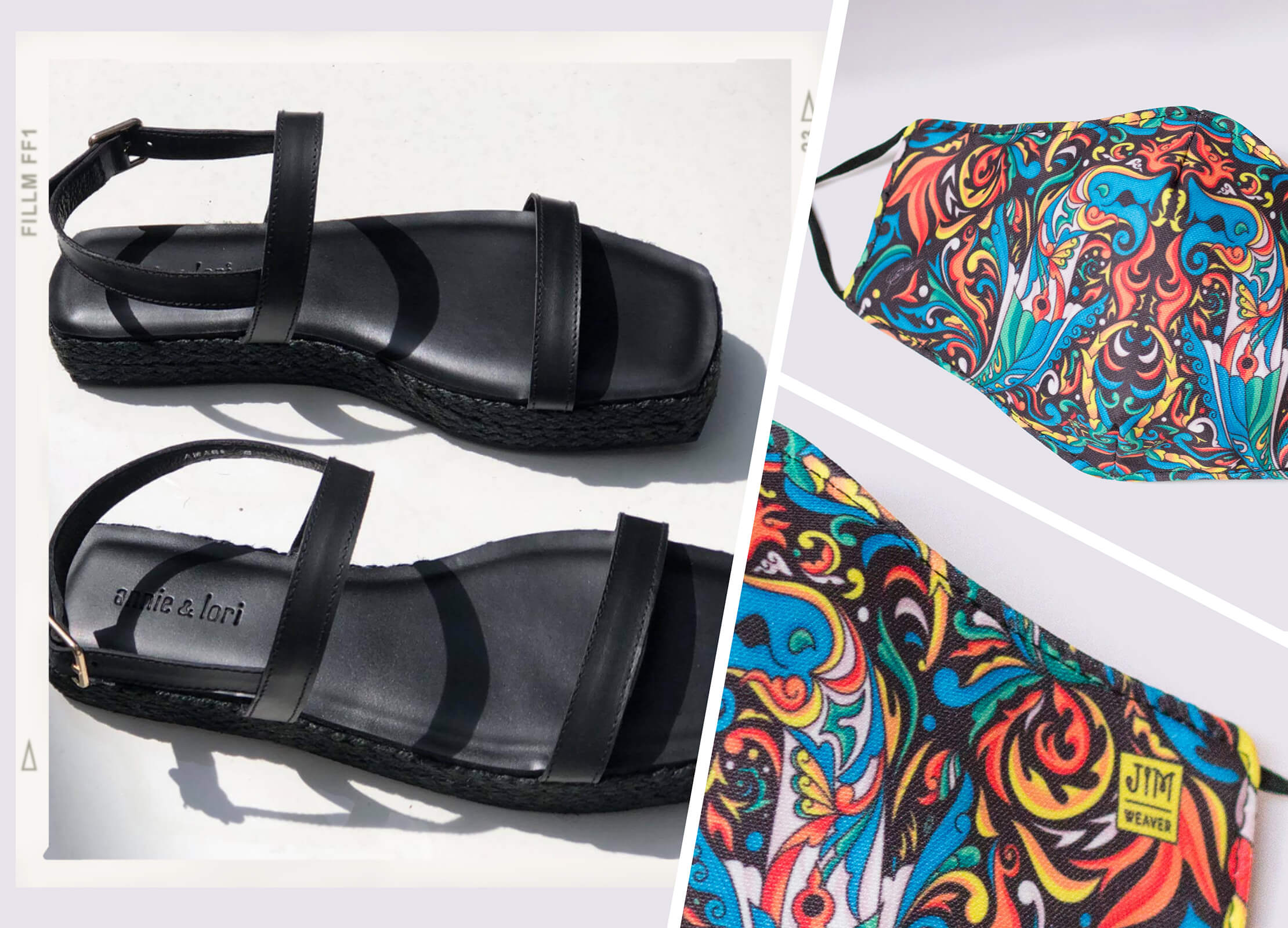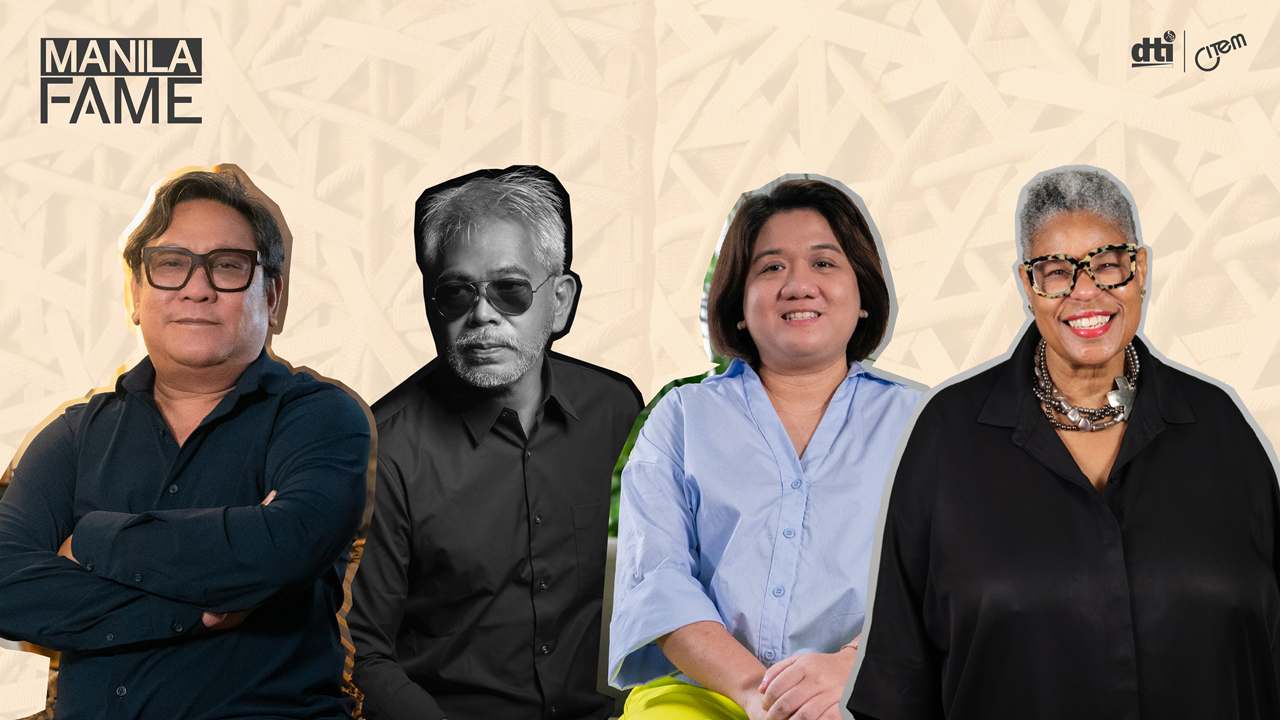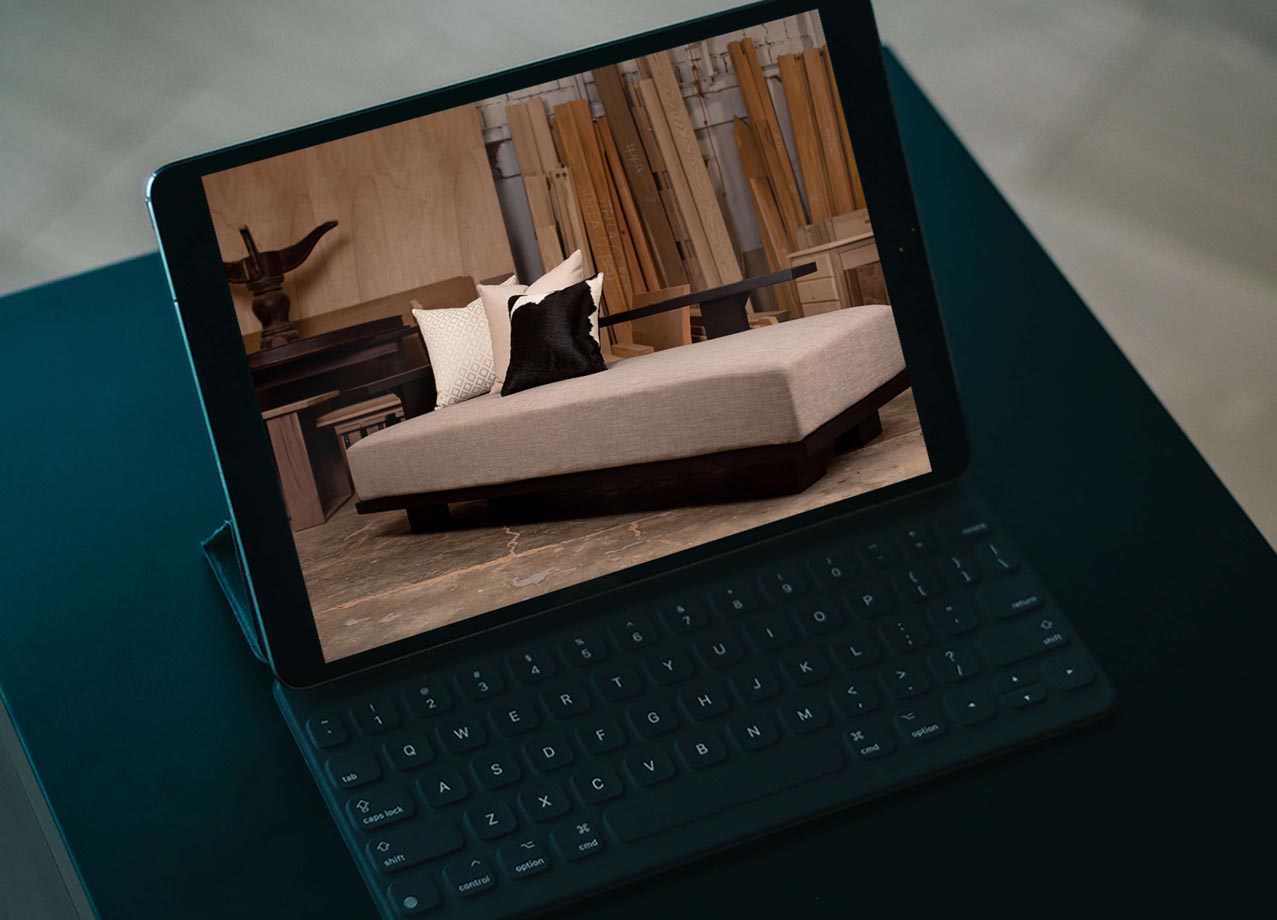
Virtual Realities
Home and lifestyle brands successfully embraced digital marketing following the pandemic—and here’s how others can follow suit
by Vicky Montenegro
A month into the Emergency Community Quarantine (ECQ) lockdown last year, Stephanie Kienle-Gonzalez and Jessica Kienle-Maxwell started creating lifestyle content and uploading them on the Instagram TV (IGTV) of their home and lifestyle brand, Philux. Called “At Home with Philux,” the sisters let Philux followers into their beautiful homes: Maxwell, who is Head Designer, kicked things off with a how-to on coffee tablescape, while Gonzalez, Managing Director, showed how to do date nights at home. More content would follow, and more series ideas, too.
In “Philux Dialogues,” Gonzalez engages creatives in talks on furniture design, architecture, and home entertaining. In the “Philux Virtual Tours,” viewers get two- to three-minute video walk-throughs of their showrooms, simulating physical shopping in a sense. “My sister and I did some content at home and I think that kept us going and kept us motivated,” Gonzalez says. “We just wanted to inspire our following as well during this time and just be relevant—to address the situation and say, ‘Hey, I know we're all in this really tricky situation, but let's still make the most of it. This is what I'm doing at home, maybe this will work for you.’ And just to keep the whole creative side going, too.”
Like all retail shops during the three-month lockdown, Philux temporarily closed all seven of their showrooms. They also temporarily shut down their manufacturing facility so even while their website was up and running, they weren’t taking orders. “That was really the biggest shock, I think, for everyone in retail,” Gonzalez says. “It was like the world went on a standstill.”
While households tried to adjust to the stringent lockdown rules, retail companies braced for impact. Closed shops and zero production mean zero sales, after all. “Our number one focus was our employees’ health and their job security, but we also made sure of the company's sustainability moving forward,” Gonzalez explains. “So we had to adapt quickly and do all of these internal measures to support all of that.”
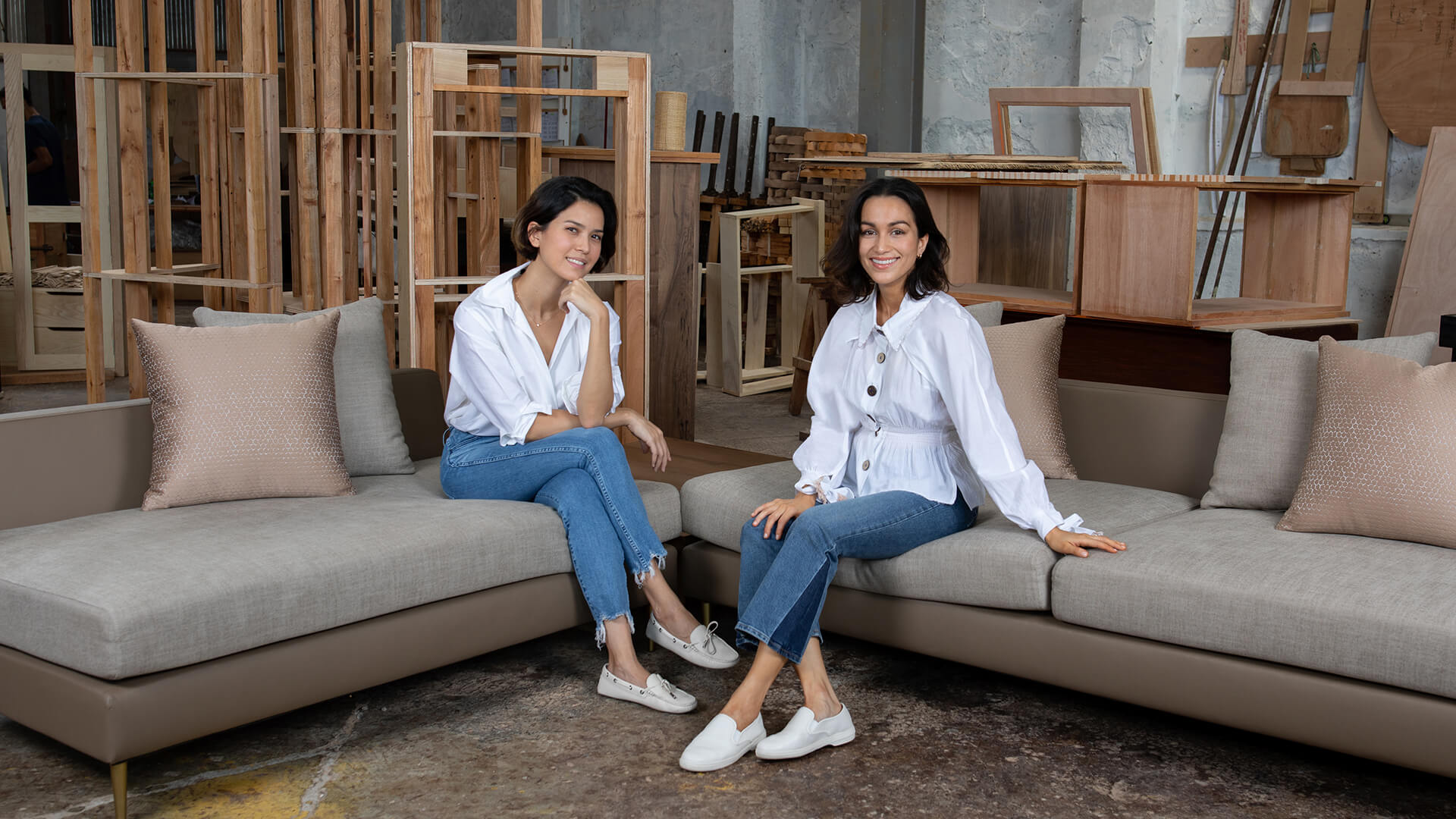
When lockdown started, sisters Stephanie Kienle-Gonzalez and Jessica Kienle-Maxwell started creating lifestyle content and uploading them on Philux’s Instagram TV
Adapting quickly included shifting their focus on their digital marketing. While Philux has always had a strong digital presence, the three months afforded Gonzalez and team the opportunity to beef up their online content and engagement and fine-tune their website. It was the same for Stephanie Sharpe, Head of Marketing of Cebu-based luxury furniture brand La Galuche, who used the time to “chat with so many people.” “We closed the factory for about three months, and it allowed me to just fully focus on the socials,” she shares. “The lockdown allowed me to be really attentive—if someone had a question, whatever time of the day, I was on it.”
Interestingly, local interest for the brand grew during the pandemic. “We started getting a lot of views from the local market, and very few people know about us locally,” Sharpe adds. “It wasn't until the pandemic hit that we really started gaining more interest locally. And local sales are actually what helped us through the pandemic. I think 2020 was one of our shockingly good years.”
Jim Torres, Owner and Principal Designer of Zarate Manila, a multidisciplinary design studio and manufacturer of mainly metal furniture, says that the business also experienced a surge in local orders. “With the kind of furniture we produce—custom, limited pieces, but higher value—we experienced a higher demand,” he shares. “Our sales tripled. I think with the pandemic, people’s attitude towards furniture changed. For one, people started investing in outdoor furniture because they were spending more time in the outdoor area of their homes.”
“We anticipated that the lockdowns will bring back the 'cocooning' trend of the '80s and may actually help promote home furnishing sales,” Randy Viray, Owner and Design Director of Triboa Bay Living, a Pampanga-based manufacturer of furniture and home accessories, points out. “However, since people were afraid to go out, we had to find a way to make it easier for them to shop. It's a good thing we have considerable presence in social media where we can announce sales promotion and product introductions.”
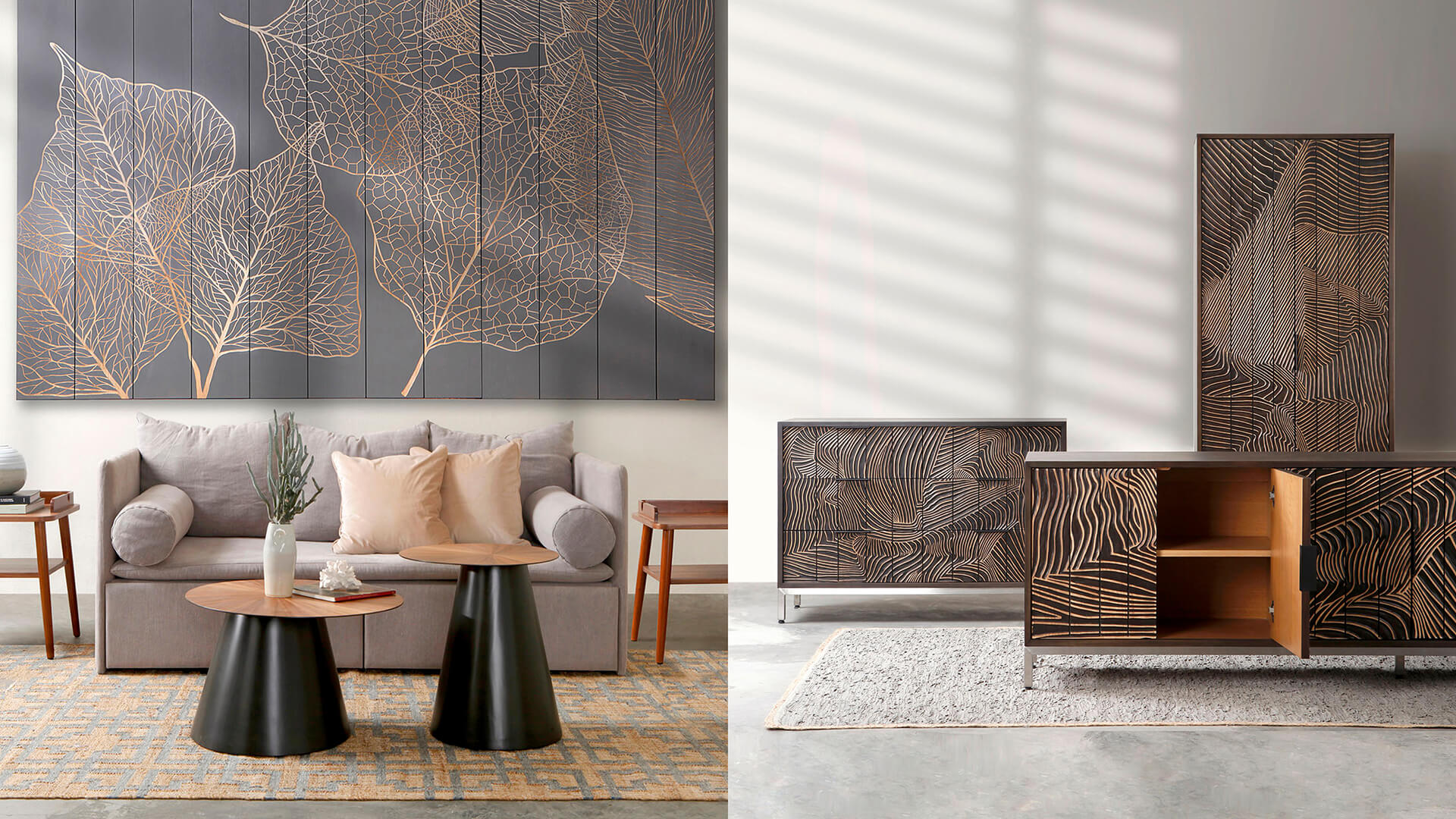
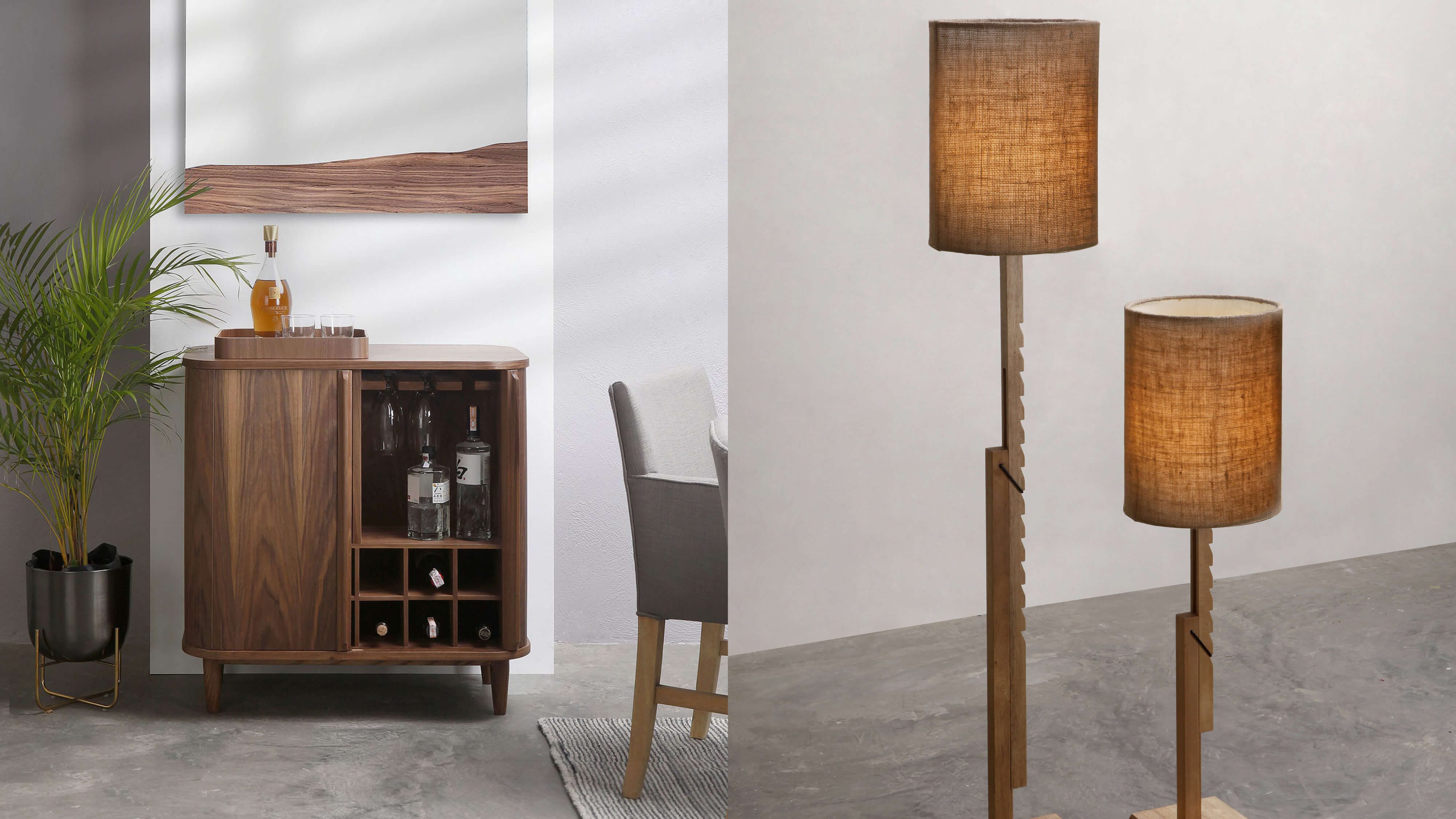
(Topmost) Triboa Bay Living’s Fyllo Wall Art, Milena Daybed, Calista Side Table, Demir Round Tables and (right) their Folded Linens cabinets. (Top) Tambour Wine Cabinet and Joshua Cylindrical Lamps
DIGITAL TO THE RESCUE
“The first thing we wanted to do was to keep open communication with our clients, and letting them know that they can transact with us and engage with us virtually,” Gonzalez, who leads a lean marketing team for Philux, notes. Philux created a virtual concierge service where dedicated account executives assisted clients “from A to Z, throughout their purchase” via email, phone call, or instant messaging.
Sharpe, who joined La Galuche in 2017 and pushed the digital marketing agenda to General Manager Dean Pasquet, concurs, “Being able to communicate with clients, I think, is what they enjoyed. You really need to communicate with a client; they really need to feel like you're taking care of them, you're listening to them. And the lockdown really allowed me to do that.”
What the lockdown really did was prompt the brands to pursue and maximize the other avenues they have—and have always had—for customer engagement: social media, namely Instagram and Facebook, and their company websites. “This pandemic accelerated the need for online presence and the need to embrace technology by every business industry,” Emata explains.
“After the pandemic, I became more aware of our online content,” Torres, who manages Zarate Manila’s social media accounts, admits. But when the pandemic hit, Torres knew he needed to up his game since “everyone will be doing digital.” “I studied my branding and refined it, and I became more picky in the content I was posting on Instagram.”
When ECQ was lifted and the city was put on General Community Quarantine (GCQ), allowing people to go to certain public places, Philux put out some online ads “to remind people that we’re around and to drive them towards our website,” Gonzalez shares. Philux’s digital efforts only grew from there. Besides the IGTV content that Gonzalez produces together with Maxwell, they maximized the reach of the other digital platforms as well. “The platforms that worked well for us are Instagram and Facebook,” she adds. “Our more serious market is on Instagram, and we've been able to link it to our webshop as well. So people can also now shop via Instagram, which is something we want to develop further to just make it more seamless for the whole virtual client experience. There’s a bit more noise on Facebook, but it has the Facebook cataloging. You can promote your online catalog there.”
“We just make sure there's a constant activity of posts, stories, shares,” Gonzalez explains. “And we always align our posts with what we have in store as well.” Their virtual showroom tours were a hit for clients who didn't want to physically visit the stores but had immediate needs. “These tours help them decide on the spot.”
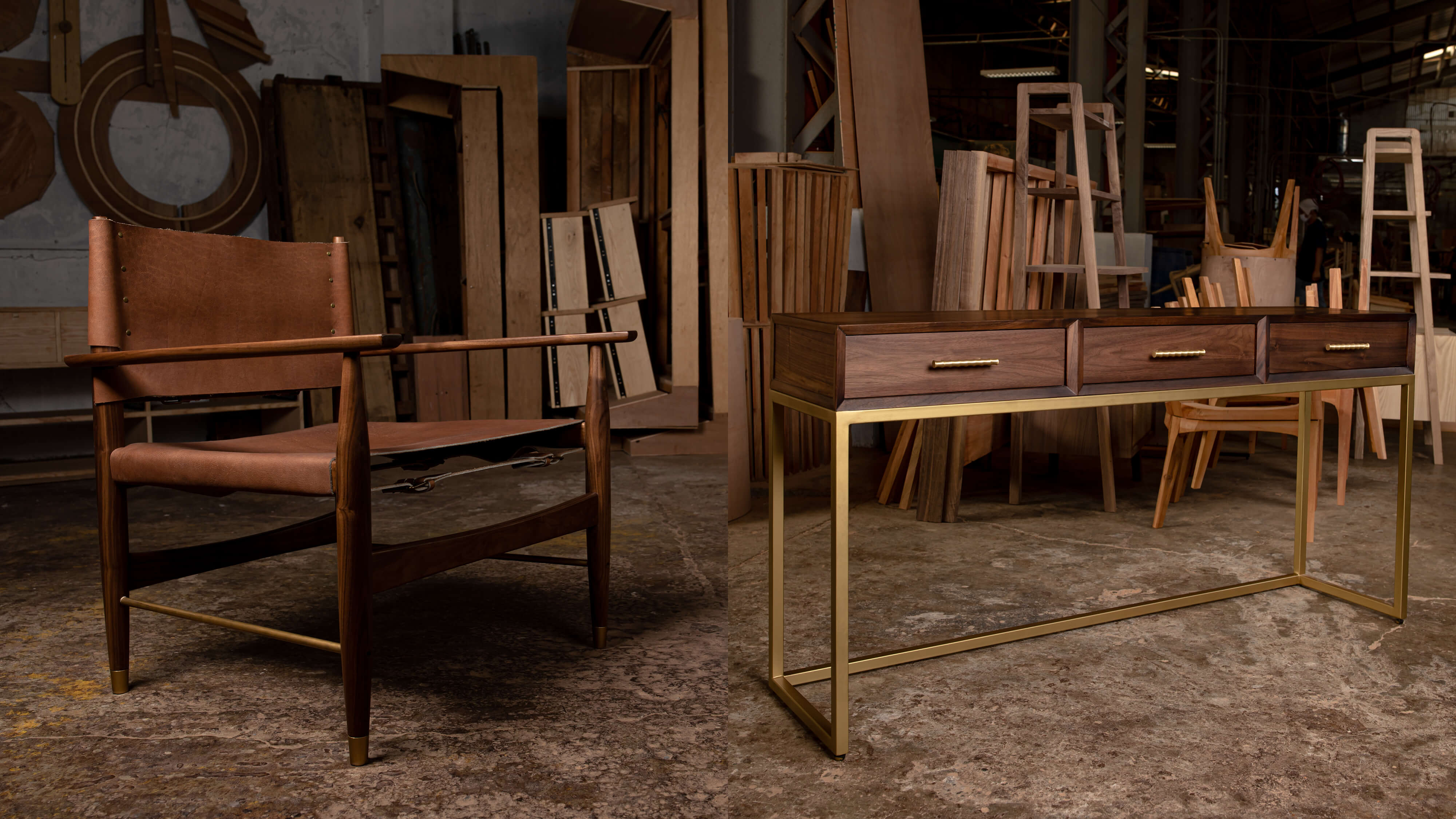
(Topmost) The Philux Director Chair and Pacific Console. (Top) Philux released a video last year, in celebration of their 40th anniversary
Content is something Gonzalez regards very highly. She believes in creating content that helps her brand connect with its market. “It's the fact that we also want to be our valued clients’ home partner,” she says. “We want them to trust us with their home decisions. We want them to come to us for inspiration. Philux is not just about promoting a product, we want to promote a certain lifestyle and brand experience.” Philux produced two videos last year: one for their 40th anniversary and a holiday music video—both of which were not product-centric, exactly how she and the team wanted it. The Philux website has a dedicated blog, which Gonzalez plans to push further as soon as she is done revamping their webshop. “We are in the process of developing the webshop, adding more products, categories, and linking it to Instagram as well. All of that, hopefully, will be improved in the next quarter,” she says.
They are in the process of automating their email newsletters, but Gonzalez notes that she prefers not to badger clients with emails. She only sends out emails once in a quarter, or when there’s news to share with their clients. “We plan to do it more often,” she says. “But at this point, I feel like people engage enough on social media. But as soon as we have more content that we can put together in a nice e-zine, for example, yeah, that’s something we will work on later on.”
Email marketing hasn’t quite worked out for La Galuche. “We used to do a lot of cold messaging through email,” Sharpe shares. “But out of 100 emails, we would get maybe one or two email responses. But, say, I reach out to 100 people on Instagram, I would say about 50 to 60 people will respond and about 40 to 50 of them will be highly interested.”
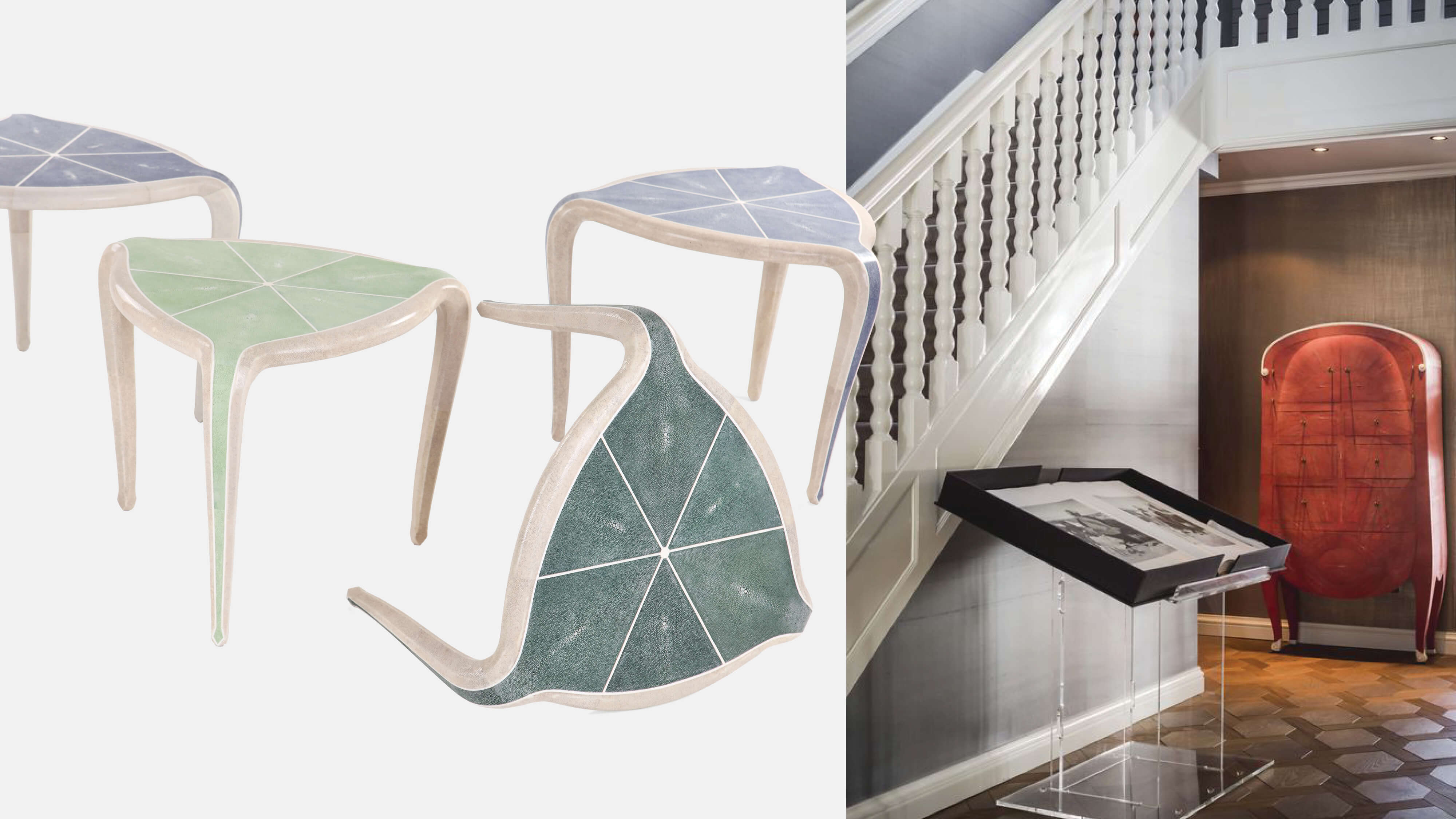

(Topmost) La Galuche’s Tripod Clement Tout Galuchat side tables and Male Groult Chest. (Top) At a showroom in Amsterdam and the Majestueux Cabinet
Sharpe has taken to Instagram and Pinterest, noting that interior designers and design enthusiasts look at the two platforms for inspiration. “Pinterest also helps get eyes on your website,” she says. “And the more people that are looking on your website, the more Google is going to push it up.” Sharpe is highly interested in algorithms. She watches YouTube videos on it and studies it extensively. She’s also very invested in hashtags. “For me, it’s like passive income. You have that photo on your page from like two years ago, but you're still getting followers, you're still getting people on your page, because of those hashtags.” Another tip? Make sure all photos have captions, descriptions, and meta tags. “Put the meta tags on photos,” Sharpe admonishes, “make every photo searchable.” True enough: if you type in “shagreen furniture” on Google, La Galuche comes out on top.
Not just any kind of content will do, too. “If the captions are well done,” she adds, “we will get a lot of engagement from it.” She plans to work on blog content soon—it will get more people on the La Galuche site and help with search engine optimization (SEO) as well, she says. “Those are like the golden three for me: Pinterest, Instagram, and good blog content.”
Torres, meanwhile, is partial to Instagram, saying that he receives an overwhelming amount of orders and inquiries on the platform. Recently, however, Zarate Manila has found another digital ally: Maison & Objet and More (MOM), the famed French trade fair’s digital platform. Zarate Manila earned its own digital showroom on MOM and received three international orders—volume orders from two US companies and from a Thailand company—as a result.
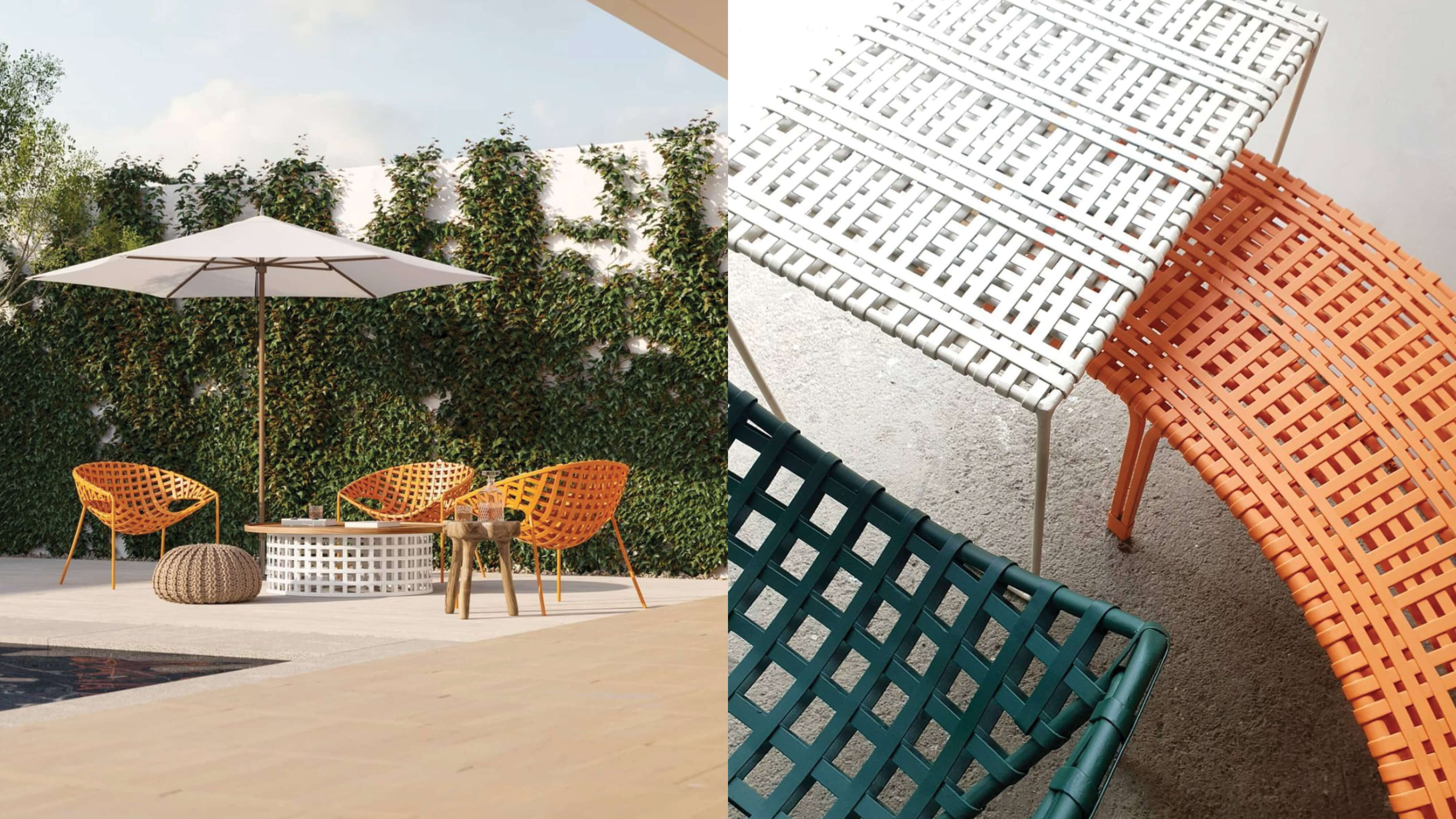

Zarate Manila’s sales tripled at the height of the pandemic, owing to the fact that people wanted to invest in outdoor furniture, like their Brique collection (topmost left)
The pandemic, it seems, has also forced brands to be even more creative. Anticipating that “some people will want to save whatever money they have,” Triboa Bay Living launched a furniture refurbishing program. “It’s for old furniture pieces that customers want to spruce up or repurpose,” Viray notes. And though not strictly a pandemic project, Philux launched Philux Spaces, their interior design service. “We’ll meet with them [physically] too, and then eventually we’ll also do a home or site visit,” Gonzalez explains, “but it all starts virtually.”
A MARRIAGE OF VIRTUAL AND PHYSICAL
Digital has definitely eased the commerce drawbacks of social distancing and even helped some companies amplify sales during a period that was predicted to spell doom and gloom for retail companies. All brands, however, agree that for home and furniture brands, a brick and mortar store is still crucial. “It is important that one has a strong online presence and physical stores at the same time to be able to let customers experience the brand,” Viray reasons.
Bulacan-based Zarate Manila plans to open a showroom in Pasig by the end of this year or in early 2022. From having one showroom in Cebu, La Galuche, opened a Manila “show house” in Bel-Air 2, Makati. It’s essentially owner Lani Pasquet’s home, with a room dedicated to pieces for sale. La Galuche’s products run in the thousands of dollars—they’re veritable investment pieces. “If you're comparing, like, a $50 table to a $5,000 table…yeah, you need to see the $5,000 one,” Sharpe states matter-of-factly. “You need to justify the price point. So that's why having a show house in Manila was really important to us. And it helped with our sales.”
“Our business relies on actual touch and feel,” Gonzalez adds. “Comfort cannot be really described in a photo.” However, Gonzalez notes that in the absence of a tactile experience, consumer confidence plays a huge role in a purchase. “Thankfully, we are a brand that has been in the market for 40 years. In terms of client and consumer confidence, I do feel that we have that.”

Philux COO Stephanie Kienle-Gonzalez at the Philux workshop
Nevertheless, the reach of digital is something brands today cannot afford to miss—with or especially without a physical store. “I still can't believe that there are companies that aren't online,” Sharpe exclaims. “A lot of our competitors have refused to go online, and last year, I think three other shagreen manufacturing companies closed down. Yeah, out of six in the Philippines.”
So how do you begin to carve out a niche in the digital space? Gonzalez and Sharpe agree: focus on one first. “First and foremost, build content,” Sharpe advises. “And then what I would really, really recommend first is focusing on one platform.”
“I'm such an advocate for quality,” Gonzalez says. “There's a lot of noise online, so stick to what you're good at. Go deeper than broader.”
“But the bigger challenge, for me, is the back end,” Gonzalez warns. “It's not just setting up a website and an Instagram page, you need to think of every step of the business cycle and make sure everything aligns with your capacity, with what you're able to provide the client.” She recommends creating “a cohesive, common thread from the back end to the front end” and making sure that the digital experience begins and ends beautifully—from making content, promoting content, addressing client concerns, fulfilling an order, delivering the order, and providing after-sales service.
“If the payment gateway doesn't work or there are issues with fulfillment and the deliveries, the whole experience of the client is diminished,” Gonzales points out. “That's what makes our online marketing work; we make sure that everything is seamless. Nice content helps grab attention, but to retain a client and to make sure you have clients’ patronage for the long run, you need to take care of the whole cycle. You need to close the loop.”
Though Philux has had a pretty good head start in the digital game, Gonzalez isn’t resting on her laurels. Far from it. “It doesn't mean that we have nothing to learn, there's still a lot to learn,” she says. “And there will always be a lot to learn because we're always going to want to be at the forefront of things.”
“We've been online for the last 10 years and when the pandemic hit, we benefited from it,” Sharpe says. “But now that everyone is going online and catching up, we need to stay ahead of them. Anyone who is ahead of the game is going to be the one who succeeds.”
“And that's the exciting thing with digital,” Gonzalez smiles, “you blink, and there's something new.”
THE WAY FORWARD: HOW TO LAUNCH A DIGITAL MARKETING STRATEGY
Social media strategist Ros Juan cannot stress the importance of digital marketing enough. “To reach markets within the country, you need to be online,” she says. “To reach markets beyond the country, you definitely need to be online.”
Juan, who is also CEO of Commune, a café + bar in Poblacion, Makati, says that brands have no choice in the matter. “We have no choice but to be in the online space, and this is why we have to embrace digital,” she reasons. “Even if there may be some learning curve to it—because sometimes it can really be challenging—it's just the way forward. Besides, the opportunities that digital and the online space can provide are endless.”
In this video, Juan explains how brands can go about strategizing for a digital audience.
Photos and video courtesy of brands
Digital marketing video editing by Kit Singson


.png)
